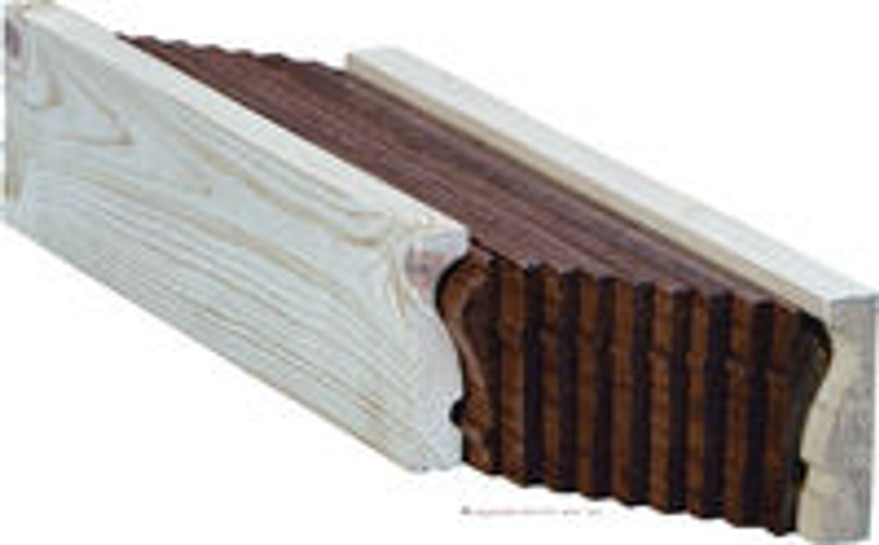I’ve been getting a lot of calls lately regarding, “How do I bend a rail?” Bending handrails, even for some of the most experienced carpenters causes fear and trepidation. Well, fear not!
Here are some beginning base tips:
If the net length on the rail you are bending is 12-ft, a 14-ft bender rail is best to insure that the ends are pulled around the desired radius in order to hold its form when removing rail from its clamps. If you have 13 “steps or treads”, you are safe with a 14-foot bender for an inside radius. If an outside radius going up a stair, figure 2-foot per step.
Weldwood’s Plastic Resin Glue (a DAP product) is perhaps the most ideal glue for bending handrails. It has a curing time of 24 hours, allowing for ample time for one to bend rails without feeling rushed. It also sands easily once dried and works with stains. While there are many good adhesive products on the market, choose the one that is tailored to this type of application. An extended working time is important, allowing the carpenter time to work and bend the product into place. The best place to find the plastic resin glue is a True Value Ace Hardware Store. I understand that they bought the rights to sell this product, which pulled it off of the shelves at all Home Depot and Lowes. It comes in a one pound plastic contain and is mixed (activated) with water until soupy. Apply it to both sides of the bending rail keys, tape or shrink wrap the rails together, and you can start bending!
When considering steam bending, Weldwood is best applied once the handrail has been steamed and bent on the forms. Remove it from the forms once dried, apply the Weldwood, and reattach to the forms. Steaming handrail, for most styles, is not an option unless your bending rail is less than an 18-inch radius. For some handrail styles the minimum before steam may be a 36 to 24-inch radius.
One key to keeping the stress points on the rail’s shoulder from cracking or breaking is to apply vinegar on the stressed areas of the wood. Vinegar reacts with the woods fibers to relieve stress. Don’t use bleach! It will permanently stain some hardwoods black
The minimum radius achieved with each rail profile also depends on the rail style, which includes the thickness of the rail, the number of bending keys, and even wood species can be a factor. Red Oak is one of the easiest to work with, while extremely hard woods (like hard maple, hickory and Brazilian cherry) are not as forgiving. As a rule of thumb, most rake rails can be bent to minimum radius of 36", while balconies are 42". Steam bending is an option for extreme circumstances. The tightest I've bent a handrail using the steaming method is 6"!
Once a handrail is bent, use an orbital or belt sander to finish the job. Make sure all glue is properly sanded, otherwise one will have blotches where the stain cannot penetrate since glue acts as a sealer.
C-Clamps or bar clamps are the best two tool choices for bending handrail.
Also, as a helpful hint, there is a book on the web entitled “Coffman Stair Building Guide”, by WM-Coffman stairs. Chapter 9 is entirely dedicated on bending stair handrails (with pictures!) The book is no longer in print but there are copies to be had through Amazon.com and WordPress.com.

